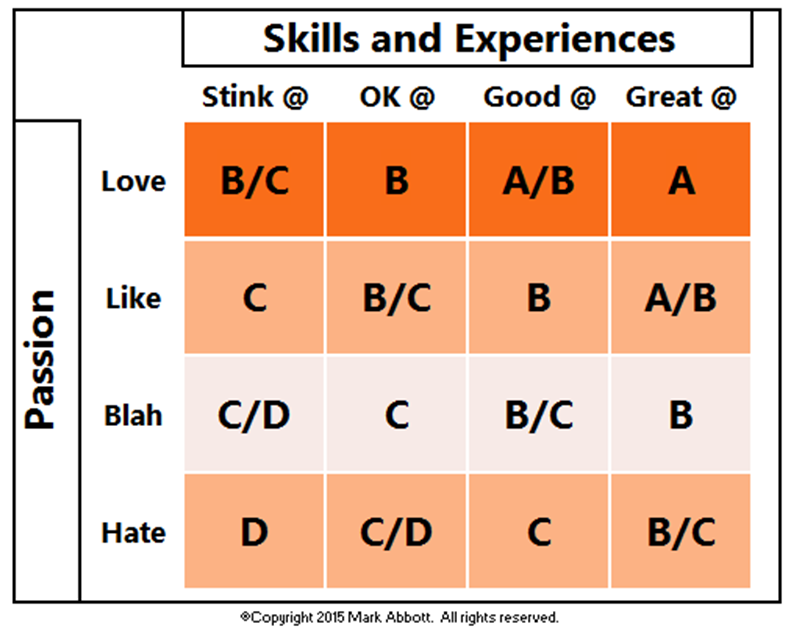What really distinguishes A Players, B Players, C Players, and D Players?
Generally speaking, and there are always exceptions, it’s skills and experiences versus passion.
A Players are not only great at all facets of their roles, but they tend to love them all.
B Players are generally really good at their roles and like them, but they aren’t as passionate about getting better or being the best.
C players are typically OK at best, but their indifference tends to bring down the energy within their organizations.
And as shared in a prior posts, D Players should never have been put into their roles in the first place.
The reality is, for most of us, we are in positions comprised of roles we love, roles we like and roles to which we are somewhat indifferent at best. Yes, the truth is, even the best of us are part A Player and part B Player or worse.
That said, over time, as we rise through organizations, our goal should be to delegate and elevate ourselves into seats (aka positions) comprised of roles we are great at and that we love owning. Yes, it is very rare to love everything we do but we tend to flourish when we get ourselves in positions where at least 80% of our time involves doing things we excel at and love.
I have also found that the above skills and experiences versus passion model is a powerful tool when incorporated into one’s performance review and developmental feedback sessions. My experience suggests that employees and managers are far more likely to agree on the placement of each of the seat’s roles into one of the 16 quadrants than they are to see eye to eye during a less focused, broader ranging, conversation regarding performance (note: no need to label the quadrant with letters).
I find it even more productive if managers encourage their employees to come to the meeting prepared to share a self-assessment based version of their review form (click here for a two page feedback form I share with my clients), especially if it includes allocating each of the specific roles associated with the seat to one of the 16 quadrants. These self assessment based sessions tend to not only reveal that employee and manager are mostly on the same page but focus the conversation on the areas where there may be a difference of opinion, including where the manager perceives the employee stronger than she sees herself.
Finally, I am a huge believer that employees and managers should sit down at least once every quarter for at least an hour and share updated performance discussion forms. One year is way too long to wait for a manager to provide, or for an employee to solicit, feedback.
Until next time, may you build with passion and confidence.




